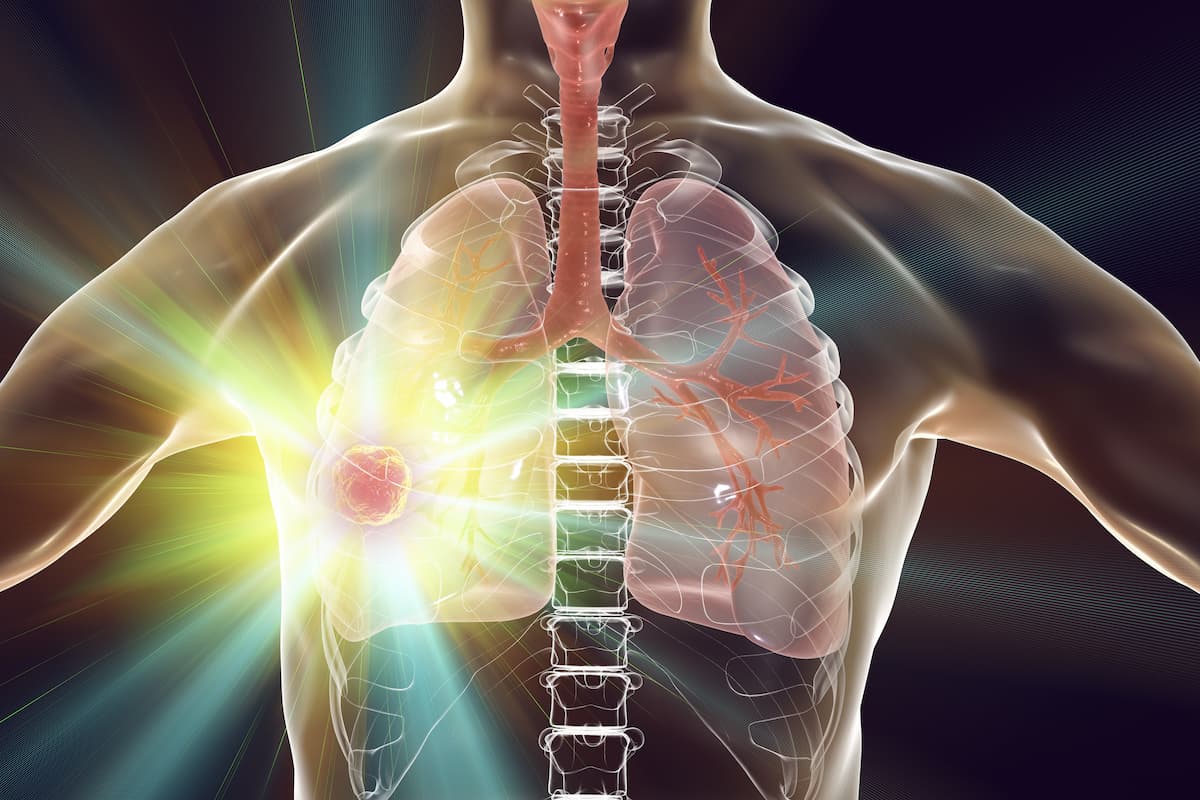T-DXd Yields Consistent Results in HER2-Overexpressing NSCLC
T-DXd given at 2 dose levels continued to show anti-tumor activity in patients with HER2-overexpressing non–small cell lung cancer.
"“There is an unmet need to investigate HER2-directed agents in patients with HER2-overexpressing NSCLC, despite HER2 overexpression being observed in 8% to 23% of these patients," according to the study authors.

In the phase 2 DESTINY-Lung01 trial (NCT03505710), trastuzumab deruxtecan (T-DXd; Enhertu) showed tolerable anti-tumor activity in patients with HER2-overexpressing or HER2-mutant unresectable or metastatic non–small cell lung cancer (NSCLC), according to findings published in The Lancet Oncology.
This analysis focused on cohorts 1 and 1A, with previous reports of cohort 2 already being published. In cohort 1, the confirmed objective response rate (ORR) was 26.5% (95% CI, 15.0%-41.1%) and 34.1% (95% CI, 20.1%-50.6%) in cohort 1A. A partial response was observed in 27% vs 29% of patients, respectively.
“There is an unmet need to investigate HER2-directed agents in patients with HER2-overexpressing NSCLC, despite HER2 overexpression being observed in 8% to 23% of these patients. At present, no approved or recommended HER2-directed therapies are available for patients with HER2-overexpressing NSCLC, and thus far, few trials have reported efficacy results for HER2-directed regimens in this patient population,” the authors of the study wrote.
In cohort 1, patients were given T-DXd at 6.4 mg/kg vs 5.4 mg/kg in cohort 1A. Both treatments were given intravenously once every 3 weeks. The first infusion lasted 90 minutes, plus or minus 10 minutes. If patients did not experience infusion-related reactions, subsequent doses were given over 30 minutes plus or minus 5 minutes.
The primary end point was confirmed ORR by blinded independent central review according to RECIST v1.1 criteria. Secondary end points included disease control rate (DCR), duration of response (DOR), and progression-free survival (PFS) by investigator assessment.
A total of 49 patients were enrolled in cohort 1, and 41 were enrolled in cohort 1A. At data cutoff, 2 patients in cohort 1 remained on treatment vs 5 in cohort 1A most commonly because of disease progression in 45% vs 32% in each group. The median treatment duration was 4.1 months vs 5.5 months, and the median follow-up was 12.0 months vs 10.6 months in cohorts 1 and 1A, respectively.
Baseline characteristics in cohort 1 included a median age of 63 years; 61% of patients were male, and 63% were White. Patients were evenly distributed between Asia (24%), North America (39%), and Europe (37%). Patients most commonly had immunohistochemistry (IHC) scores of 2+ (80%), previously received platinum-based chemotherapy (92%), and did not have a previous lung resection (76%).
In cohort 1A, the median age was 62 years old; 54% of patients were male, and 61% lived in Europe. An IHC score of 2+ was observed in 59% of patients, 98% had received previous platinum-based chemotherapy, and 83% did not have previous lung resection.
In cohort 1, the DCR was 69.4% (95% CI, 54.6%-81.8%), and in cohort 1A, it was 78.0% (95% CI, 62.4%-89.4%). Additionally, the median DOR was 5.8 months (95% CI, 4.3-not evaluable [NE]) in cohort 1 and 6.2 months (95% CI, 4.2-9.8) in cohort 1A.
The median PFS in cohort 1 was 5.7 months (95% CI, 2.8-7.2), and 6.7 months (95% CI, 4.2-8.4) in cohort 1A. Between each cohort, the median overall survival was 12.4 months (95% CI, 7.8-17.2) and 11.2 months (95% CI, 8.4-NE). Overall, 80% of patients in cohort 1 died vs 56% in cohort 1A.
Grade 3 or higher drug-related treatment-emergent adverse effects (TRAEs) occurred in 53% of patients in cohort 1 and 22% in cohort 2. The most common TRAEs included neutropenia (24% vs 0%) and fatigue (10% vs 7%). Between cohorts 1 and 1A, drug-related serious AEs occurred in 20% vs 7%, with the most common including pneumonitis (8% vs 2%) and nausea (4% vs 0%).
Drug-related TEAEs led to discontinuation (16% vs 7%), dose reduction (35% vs 17%), and interruptions (35% vs 10%). The most common TEAEs that led to treatment discontinuation included pneumonitis (14% vs 5%) and disease progression (4% vs 7%) between both groups, respectively.
“Sample size was a limitation of this study. Small numbers of patients were included in the subgroup analyses, limiting the conclusions that can be drawn from these analyses. HER2 testing was done on archival tissue for most patients, which could also be a potential limitation if HER2 expression levels changed during previous therapies,” the study authors concluded.
Reference
Smit EF, Felip E, Uprety D, et al. Trastuzumab deruxtecan in patients with metastatic non-small-cell lung cancer (DESTINY-Lung01): primary results of the HER2-overexpressing cohorts from a single-arm, phase 2 trial. Lancet Oncol. 2024;25(4):439-454. doi:10.1016/S1470-2045(24)00064-0
Newsletter
Stay up to date on recent advances in the multidisciplinary approach to cancer.